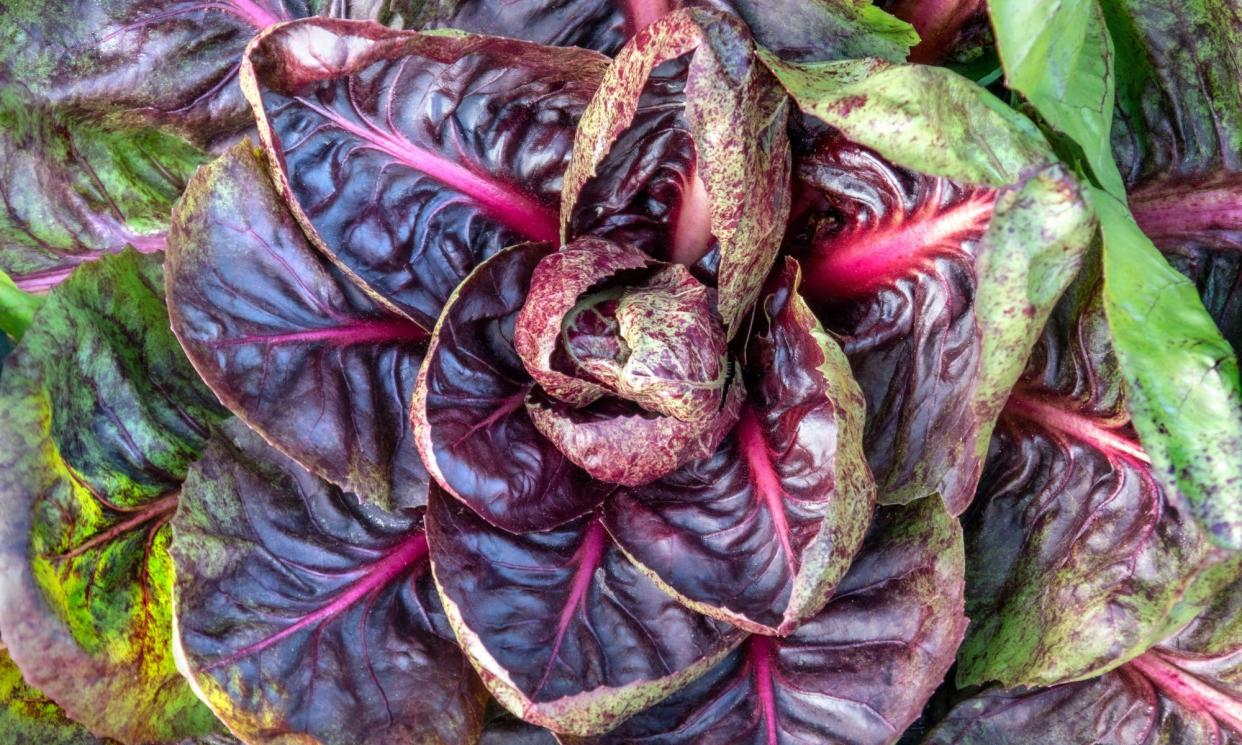Sow chicory and radicchio this summer to brighten your plate (and garden) in winter

Now that we’re at the height of summer growing season, and tomatoes and courgettes are making their way from plot to dinner table, I’m reluctant to start thinking about the inexorable return of leaner months. Yet now is the time to sow radicchio and chicory seeds if we want their flavoursome leaves on our plates when the weather cools.
Last season – on the farm where I work – was the first time I’d truly experienced the glorious sight of these leaves growing through winter. If sown in trays around now and planted in the ground in a month or so, the crops will have plenty of time to develop a robust root system, a tight heart and a chubby head of greenery before the weather shifts and halts growth. The outer leaves are tough enough to endure a battering from harsher weather and they can develop a slimy exterior as they break down which, when peeled away, reveals the most divinely vibrant, crisp leaves that taste delectably bitter. The closer they are to the centre – where the sun’s light hasn’t reached – the gentler and sweeter their taste.
A chicory plant is ready to be picked when you can feel the heart of the plant has formed a head that’s about the size of a grapefruit
How to sow them? In a modular tray, one seed per module. When the seedlings are substantial enough, pop them into the ground or in a container, leaving 20cm between each plant. Water amply while your plants are establishing and keep the soil around them free of weeds. While many varieties can withstand drops in temperature, throwing a protective fleece over fledgling leaves in inclement weather is worth the effort.
A chicory plant is ready to be picked when you can feel the heart of the plant has become firm and solid, forming a head that’s about the size of a grapefruit.
Related: I’m an eco-friendly grower – so why do I want to murder all these vile slugs? | Claire Ratinon
The standout varieties, which brought brightness to my palate from November to early January last winter, are the traditional radicchio ‘Palla Rossa’, which produces crunchy maroon leaves with streaks of bright white, and the similar ‘Rossa di Verona’, which can be sown and planted out a little later to be ready in early spring. Another favourite is the looser-leaved ‘Variegato di Castelfranco which develops gorgeous pink-red flecks all over its pale green-yellow leaves.
And if you can’t get on with chicory’s famous bitterness, there are certain varieties, such as witloof, that can be “forced” (deprived of sunlight while actively growing) so that their blanched leaves are less intense. There’s also the sugarloaf type, which grows into the shape of a Chinese cabbage and, while less robust against the cold, produces leaves that aren’t such an acquired taste.


